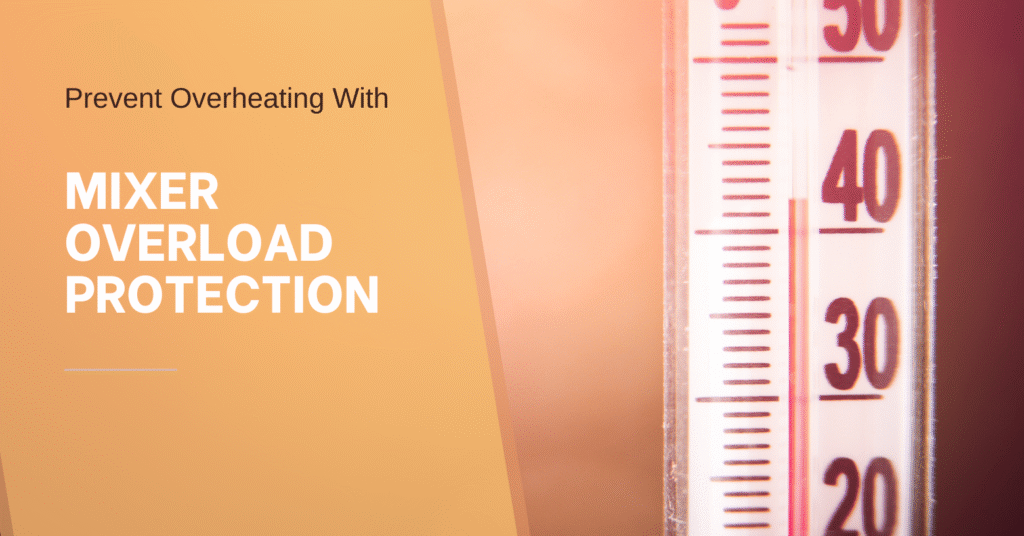Notice: I receive compensation if you buy something through affiliate links on this post. This does not change the price you would pay.
Picture this…you’re halfway through mixing a gorgeous batch of bread dough when you hear it.
The mixer’s pitch changes. A low, strained groan. Then comes that warm, metallic scent. Your heart skips. Is it just working hard… or about to quit on you?
That was me before I opted for a kitchen help with mixer overload protection.
I realized it wasn’t worth the nerves when there is a smarter way to knead challenging dough, without constantly worrying that my stand mixer will go bust.
Think of overload protection as your mixer’s built-in safety net, ready to step in before the strain turns into damage.
Let’s break down what it is, why it matters, and how it can be the difference between years of reliable bread baking and a burnt-out motor after just a few batches.
Table of Contents
- 1 What Is Mixer Overload Protection?
- 2 Why Bread Dough Pushes Mixers to Their Limit
- 3 Benefits of Mixer Overload Protection for Bread Dough
- 4 Mixers with Reliable Overload Protection (Top Picks)
- 5 Reduce Mixer Strain Even Without Overload Protection
- 6 Make Bread Without the Nerves
- 7 Frequently Asked Questions
What Is Mixer Overload Protection?
Think of overload protection as a built-in bodyguard for your stand mixer’s motor.
At its core, it’s a safeguard that automatically stops the machine when it senses too much strain, whether from heat, torque, or electrical load.
Different mixers use different overload protection methods:
- Thermal sensors that detect rising motor temperatures.
- Current limiters that shut down when the electrical draw exceeds a certain threshold.
- Torque detection systems that sense mechanical strain.
When triggered, the mixer will either stop completely or refuse to restart until it cools down.
It’s not flashy. It doesn’t change the way your dough looks. But when your motor is working against the dense resistance of bread dough, it can mean the difference between a short pause and a long repair bill.
Why Bread Dough Pushes Mixers to Their Limit
Cake batter is light and airy. Cookie dough is stiff but forgiving. Bread dough? That’s a different story.
- It’s dense: flour and water bind into a heavy, elastic mass.
- It’s resistant: gluten development means the dough fights back against the hook.
- It’s persistent: kneading for 8–10 minutes puts a continuous load on the motor.
Without overload protection, your mixer might:
- Slow down or stall.
- Heat up until the casing feels hot.
- Emit a faint “burning” smell, which is not a good sign.
Here’s the counterintuitive part: It’s not always too much dough that causes the problem. Even a single, dense loaf can overwork a smaller mixer if speed or time isn’t managed well.
Benefits of Mixer Overload Protection for Bread Dough
Bread baking is a long game. Overload protection is a way to play it safe without hovering over your mixer like a nervous parent.
Here’s what it brings to the table:
- Motor damage prevention – Stops the motor before friction heat can melt internal components.
- Longer mixer lifespan – A cooler motor lives a longer life.
- Peace of mind – You can focus on the dough’s windowpane test, not your mixer’s temperature.
- Consistent results – You don’t have to cut kneading short just to avoid overheating.
It’s like having a built-in safety net for every heavy dough day.
Mixers with Reliable Overload Protection (Top Picks)
Not all mixers offer this safeguard, but these models handle bread dough efficiently:
- Bosch Universal Plus – Exceptional for big batches; shuts down automatically if overloaded.
- Ankarsrum Assistent – Uses torque sensing to ease strain during heavy kneading.
- Kenwood Chef XL Titanium – Thermal motor protection plus high power.
- Cuisinart Precision Master 5.5-Qt – Affordable with dependable overheating shut-off.
- KitchenAid 7-Qt Stand Mixer – Commercial-grade with strong overload defense.
If you bake bread often—or in large quantities—investing in one of these can save you from motor repairs down the road.
Reduce Mixer Strain Even Without Overload Protection
No overload protection? No problem—if you’re smart about it.
Try these precautions:
- Mix in smaller batches – Halve the recipe if you’re making multiple loaves.
- Use correct speed settings – Most bread dough kneads best on low to medium speeds.
- Rest the motor – Give it 2–3 minutes off for every 5–6 minutes of kneading.
- Keep it cool – Avoid running the mixer in a hot kitchen; airflow matters.
Here’s a tip:
When triggered, some overload protection, like my KitchenAid’s, stops the mixer until it gets cool (30 minutes on my mixer). If you don’t want to wait that long, it would be wise to apply precautions.
Make Bread Without the Nerves
Here’s the thing: nobody wants to bake with one eye on the dough and the other on the smell of burning motor.
But mixer overload protection changes the game. It’s the silent bodyguard standing between your mixer and a burnout. It lets you mix heavy dough without holding your breath. It saves you from costly repairs. And it buys you something hard to put a price on: peace of mind.
You’ve now got the know-how. You understand why bread dough pushes mixers to the edge. You’ve got a list of machines that can take the hit. You even know how to baby the ones that can’t.
So go ahead—bake boldly. Push that dough hook into the thickest, chewiest loaf your recipe box can offer. With the right mixer, proper safeguards, and approach, baking becomes enjoyable, not a gamble.

